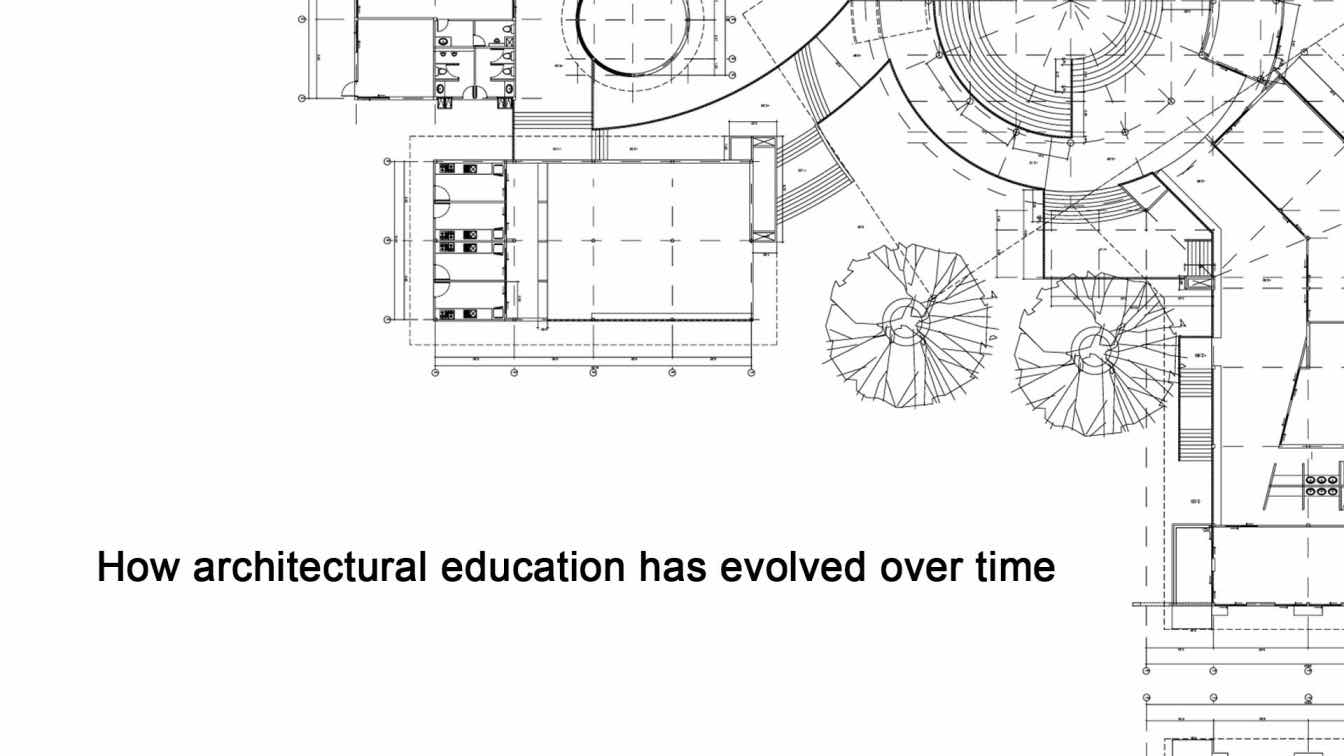Architecture is one of the fields that have undergone significant changes in the past decades. Most countries have ancient structures, including buildings and historical sites, which portray their construction industry’s creativity, expertise, and innovativeness. Changes in this sector’s operations depend on the skills and capabilities of architects and interior designers who design and construct buildings. As a result, the education system has experienced tremendous changes in an attempt to produce competent architects for the job market. In this article, we have outlined the key stages that architectural education has undergone over the years.
In recent years, students can get assignment writer services for their architecture assignments. But was this possible during the early 1900s? Although this approach helps learners to broaden their knowledge and skills, it has only become popular due to technological advances, particularly the emergence of digital fabrication techniques. So, what was it like to study architecture in the past? How has the system evolved over time? Read on to find out:
Architectural education during the 15th and 16th centuries
This period, popularly known as the Renaissance, was preceded by informal learning. Individuals interested in architecture learned through apprenticeship programs, which helped them gain hands-on experience. Although this method proved efficient in producing skilled craftsmen, its efficiency relied on the master architect’s knowledge base and competence.
Classical architectural principles from Rome and ancient Greece later replaced the old-age apprenticeship program. As a result, the first architectural learning institutions were established to teach aspiring architects in a formal environment. Architectural education gradually developed into a more structured system featuring subjects like geometry and mathematical principles.
Development of traditional architectural schools and teaching models
The period after the Renaissance was characterized by the establishment of more architectural schools, which developed a unique curriculum incorporating designs, structural components, planning, and organization frameworks to nurture upcoming architects. Unlike traditional approaches, students learned by attending workshops, lecture sessions, and participating in studio work, which helped them to familiarize themselves with different techniques for formulating solutions to architectural problems.
Traditional architectural education was effective because it focused on teamwork and hand-drawing. It also encouraged regular practice and relied on the guidance of professors and experienced instructors.
Changes in architectural education as a result of advancements in technology
Computer technology has brought numerous changes in architectural education. The most impacted areas are teaching methods and learning approaches for students. Since the innovation of Computer-Aided Design (CAD) in the 1960s and its gradual developments until the 1980s, architectural students have been able to learn and create detailed designs and produce architectural plans easily. Most learning institutions have incorporated the software into their curricula due to its contributions to modern architecture. Apart from ensuring learners are proficient in using this tool, schools have embraced 3D modelling, printing, and laser cutting to produce qualified architects for the ever-evolving job market.
Numerous factors contribute to the evolution of architectural education. Although embracing the resultant changes often presents challenges to educators and learners specializing in this field, the long-term outcomes have far-reaching benefits. Here are some significant uses and advantages of the evolution:
1. Prepares students for the architectural field by equipping them with relevant skills and knowledge
Integrating technology in architecture, particularly in designing new models, expands the curriculum’s scope. Consequently, it creates a need to familiarize individuals interested in this career pathway with emerging design tools and effective techniques. The evolution facilitates more efficient design processes and prepares learners for well-paying and marketable careers in urban design and other architecture-related sectors. As a result, architectural education's evolution helps students prepare for the workforce by assisting them to learn new technologies and relevant skills to operate them as they emerge.
2. The evolution of architectural education promotes sustainability
Evolution is characterized by the discovery of new methods of operation, most of which result in efficient service delivery, resource use, and enhanced productivity. These advancements have led to the development of sustainable designs in architectural education, minimizing the effects of construction activities and the resultant structures on the environment. Besides learning about reliable and cost-effective materials and energy-efficient architectural designs, individuals familiarize themselves with ecological urban designs, waste reduction strategies, and ways to conserve natural resources to meet the current and future generations’ needs.
3. Enhances acquisition of technical skills
Like other sectors, including engineering, architectural education helps individuals develop skills like Computer-Aided- Design(CAD) and preparing drafts. Besides enhancing students’ technical abilities, these skills help them prepare construction designs and documents and learn to communicate their ideas more effectively.
Final Thought
As architectural education evolves, so do other sectors of the economy. These changes are associated with technological advances and awareness about policy reforms to promote sustainable growth and development. In addition, the changes in education help students learn and appreciate the significance of interpersonal collaboration with experts in sectors like engineering and urban development.





